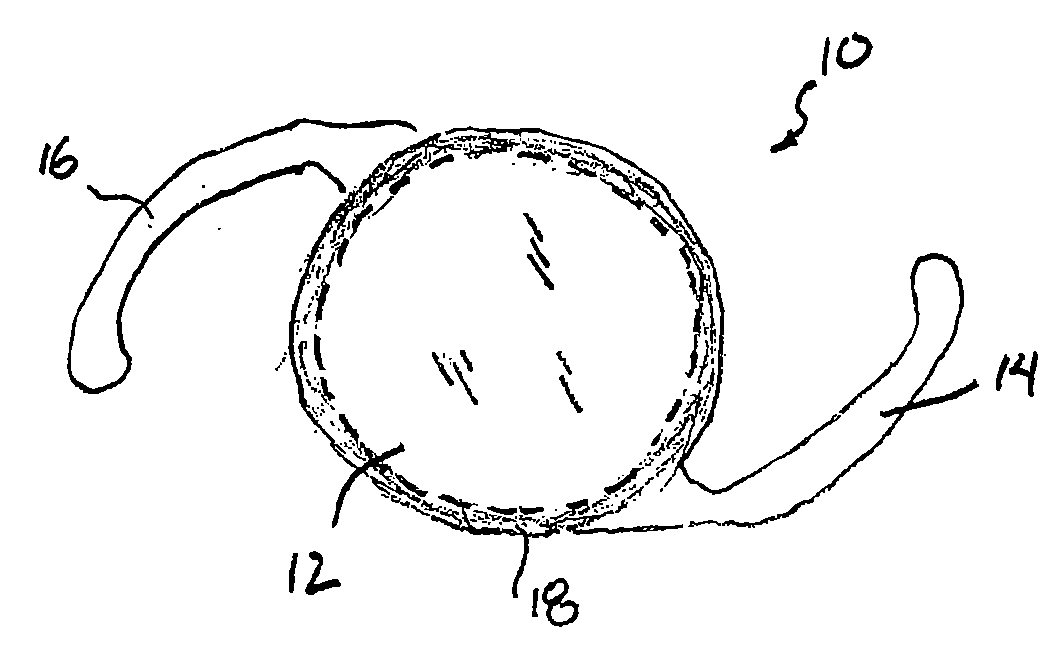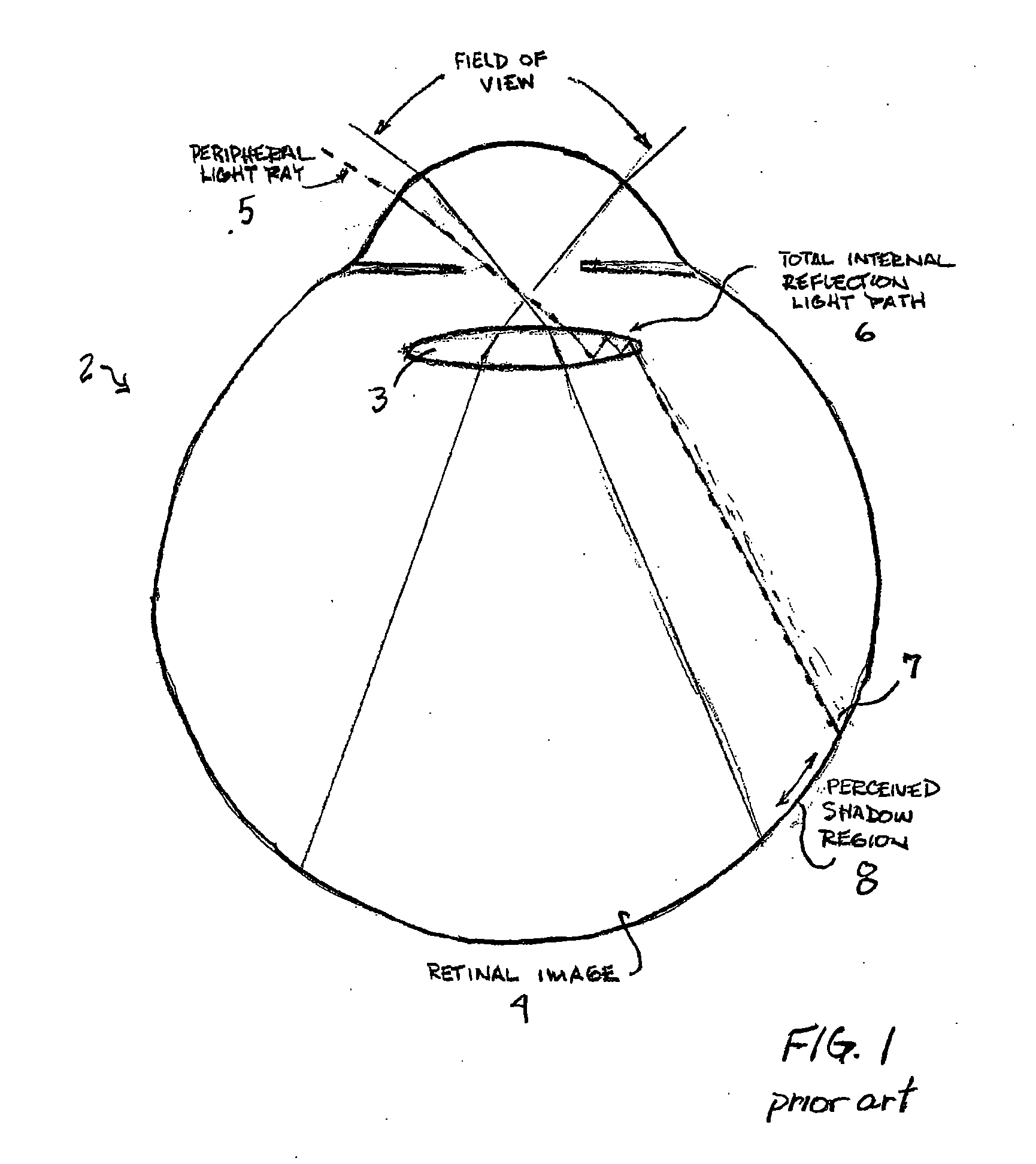Intraocular lens with edge modification
a technology of intraocular lens and edge modification, applied in intraocular lens, medical science, prosthesis, etc., can solve the problems of internal reflection and misdirection of light by the iol, and achieve the effect of avoiding, and preferably eliminating, dysphotopsia and/or the perception of dark shadows
- Summary
- Abstract
- Description
- Claims
- Application Information
AI Technical Summary
Benefits of technology
Problems solved by technology
Method used
Image
Examples
Embodiment Construction
[0028]The term “intraocular lens” and its abbreviation “IOL” are used herein interchangeably to describe lenses that are implanted into the interior of the eye to either replace the eye's natural lens or to otherwise augment vision regardless of whether or not the natural lens is removed. Phakic lenses, for example, are examples of lenses that may be implanted into the eye without removal of the natural lens.
[0029]To illustrate the problem of internal reflection-induced dysphotopsia, FIG. 1 shows a conventional IOL 3 implanted in an eye 2. The conventional IOL 3 will form an image 4 of a field of view by focusing a plurality of light rays entering the eye onto the retina. Peripheral light rays (such as ray 5) that enter the eye at large visual angles enter the IOL 3, but can be subject to internal reflection rather than pass through the IOL 3 and form part of the retinal image 4. These high-angle, peripheral rays instead follow an internal reflection path 6 and may reach the retina ...
PUM
 Login to View More
Login to View More Abstract
Description
Claims
Application Information
 Login to View More
Login to View More - R&D
- Intellectual Property
- Life Sciences
- Materials
- Tech Scout
- Unparalleled Data Quality
- Higher Quality Content
- 60% Fewer Hallucinations
Browse by: Latest US Patents, China's latest patents, Technical Efficacy Thesaurus, Application Domain, Technology Topic, Popular Technical Reports.
© 2025 PatSnap. All rights reserved.Legal|Privacy policy|Modern Slavery Act Transparency Statement|Sitemap|About US| Contact US: help@patsnap.com



